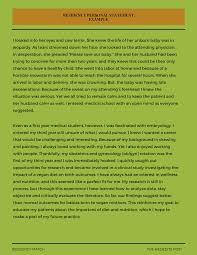Navigating the Residency Match Process: A Comprehensive Guide

Strong 8k brings an ultra-HD IPTV experience to your living room and your pocket.
As nerve-wracking as oral boards are, the Residency Match is a full-blown existential crisis for medical students. Where you match means where you’ll be doing your residency (internal medicine, surgery, paediatrics, etc), which in turn dictates where you’ll be working for the next three or four years and what field you’ll practise in the long term – possibly for the rest of your life, all of which contributes to the reign of terror known as the Residency Match. In this guide, I attempt to explain the Residency Match in simple terms, then provide concrete advice for navigating this perilous time in your life.
What is the Residency Match?
The Residency Match is part of the annual scramble where medical students and graduates compete for coveted residency slots in US hospitals and medical centres. Managed by the National Resident Matching Program (NRMP), the Match matches applicants with residency programme preferences filled by a computerised algorithm of applicants’ ranked preferences lining up with programme preferences.
Understanding the Match Timeline
1. Registration
The Match starts with registration in the fall and NRMP programme residency matching, usually in September. You’ll have to sign up and pay for an NRMP account.
Tip: Register early to avoid last-minute stress and ensure you don’t miss any deadlines.
2. Research and Apply
Beginning in September and starting up through December, candidates research residency programmes and apply to them electronically via the Electronic Residency Application Service (ERAS).
Tip: Apply broadly. If you are applying to a competitive specialty, better to have too many options than too few.
3. Interviews
Residency interviews usually take place in October-January. You can make an impression on the programmes, and you can learn about them too.
Tip: Come prepared for each interview and ask as many thoughtful questions as you can to demonstrate your true interest in the program.
4. Ranking
Following the interviews, the applicants submit the Rank Order List (ROL) of their preferred programs to the NRMP, in order of their preferences. Programs also submit their own RROL of preferred candidates.
Tip: Assign program rankings according to order of where you would actually like to go, not necessarily where you think you have a good chance of matching.
5. Match Week
This Week is called Match Week, and its high point comes on Match Day in March, when all applicants who have matched find out where they have been placed.
TIP: Be optimistic, but have a plan B if things go wrong.
How the Match Algorithm Works
The Match algorithm maximises ‘rank list harmonics’ between applicants and residency programmes. Maximising what? The important consideration is the position of the applicant. This means that you should rank your programmes according to where you want to go and not according to the likelihood that they might want to choose you.
Common Challenges in the Residency Match Process
1. Competition
Certain specialties are more congested than others. There’s more applicants than available spots, and everyone wants to match in those specialties, so it’s difficult to match.
Response: Apply to your top choice and a backup speciality, and also to programmes in less competitive locations.
2. Geographic Preference
Most applicants have very strong preferences for where they should be employed in various organisations, whether it is close to family, a good lifestyle or other reasons.
Solution: If you can, be flexible. Applying to several different locations (especially ones that are competitively close to each other) reduces your chances of matching. If you need to limit your application to one single geographical area, be sure to apply to all possibly relevant programmes within that area.
3. Interview Performance
The interview is the most important part of the Match process, and a bad performance can derail your chances.
Solution: Conduct mock interviews with friends and advisers, as well as research each programme to think about how you might respond.
Tips for a Successful Residency Match
1. Start Early
Start looking into programmes and putting together your applications way ahead of time. The more prepared you are coming in, the less stressful it will feel.
2. Seek Guidance
But don’t be afraid to ask questions of mentors, advisors or more mature peers who have navigated this process before as they were once in your shoes and can offer help to avoid pitfalls.
3. Be Organized
Create a list of deadlines, application requirements and communications with programs so nothing falls through the cracks.
4. Practice Self-Care
With the Match process being so stressful, it is easy for your energy to be whittled away by all the minutiae, and sometimes hard to know how to keep it all together. Prioritise self-care, and seek help or speak to friends or loved ones if you find yourself in a state of anxiety or stress.
5. Stay Positive
The Residency Match is a lottery and it is easy to say things you are not proud of in the middle of the night, but just staying upbeat and saying: ‘I am good at medicine and worth a shot,’ matters.
What to Do If You Don’t Match
Unfortunately, every crack-match applicant does not get ice-matched on their first application. Just because this may be you, it doesn’t mean you should panic; there are many options available:
1. Participate in the Supplemental Offer and Acceptance Program (SOAP)
After receiving SOAP matches, unmatched applicants can apply for unfilled residency positions. Although the process remains highly competitive, SOAP provides another chance for applicants to garner a residency spot.
2. Consider Taking a Research Year
Some opt to take a year to do research or complete a fellowship to beef up their application for a next Match cycle.
3. Reapply Next Year
Non-match simply means you’re applying again next year. Develop a stronger application this time, get input on that application, and think through widening your specialty or geographic consideration but most importantly, try, try again.
The Role of Personal Statements in the Residency Match
‘The personal statement is your opportunity to make the case about why you’re a match. IW/APL
Tips for Writing a Strong Personal Statement:
Be Authentic: Share your genuine motivations and experiences. Authenticity resonates with program directors.
Be forward-looking: Talk about your career objectives and how the residency programme will assist in getting there.
Ask for Feedback: Ask mentors, colleagues or advisors to review your personal statement.
Conclusion
The Residency Match process is tough, but at the end of the day, if you prepare properly, have a sound strategy, and have the right mindset, you will survive the match and break into the medical community. This is just one step in your life in medicine, wherever you match. Focus, get support, and trust in yourself. You will do just fine.
Note: IndiBlogHub features both user-submitted and editorial content. We do not verify third-party contributions. Read our Disclaimer and Privacy Policyfor details.







